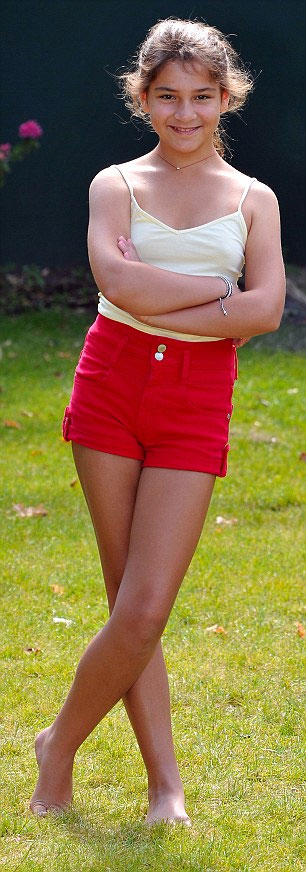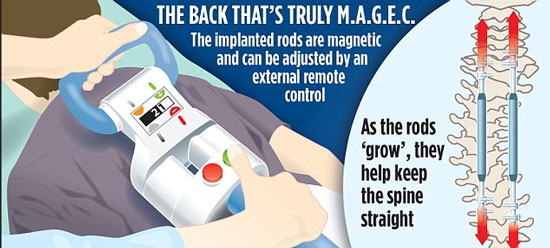Artificial bones treat scoliosis
For people with congenital scoliosis, keeping the gait straight is a problem. However, up to this point, the girl Natasha Rahman, 11, had congenital scoliosis, was able to confidently walk out of the hospital bed in the room with the shape of a normal person. This is because surgeons have implanted a remote-controlled artificial bone system into her spine with smart titanium bars.
Statistics show that in the UK there are up to 45,000 children with congenital scoliosis, making them greatly affected in later life. Natasha Rahman is one of the first British children to apply new technology to treat this disease. At a young age, Natasha's body grows very fast, so she needs her mother's remote control through the sensors in her shoes, so the titanium rods can be adjusted appropriately.

Natasha Rahman was able to stand upright
Transplanting titanium rods into the spine has been considered the treatment standard that the most famous patient is Princess Eugenie applied at 12 years old. By the age of 21, Eugenie was determined to be completely successful without deep invasive surgery. However, most children with severe scoliosis need to undergo 20 orthopedic surgeries without this transplant and cost up to £ 20,000.

The implantation of titanium rods helps patients only undergo a single operation, after which follow-up will use the automatic adjustment system to gradually bring the spine to normal posture.
According to the Daily Mail , up to now, 40 patients have been transplanted by Dr. Hilali Noordeen at the Royal Orthopedic Hospital in North London.
- Causes of scoliosis in children
- Identify twisted spine
- Free scoliosis examination for poor patients
- The artificial arm controls with the world's most advanced thinking
- Dentures from crocodile egg shells
- How to deal with chicken bones
- Korea: Artificial breast implant with the first 3D printing technology
- Interesting facts about bones are not well known
- 'In' human bones with 3D technology
- Use highly elastic biological materials to regenerate bone
- Bone screws ... to connect bones
- Schoolgirl has a 90 degree scoliosis
 Green tea cleans teeth better than mouthwash?
Green tea cleans teeth better than mouthwash? Death kiss: This is why you should not let anyone kiss your baby's lips
Death kiss: This is why you should not let anyone kiss your baby's lips What is salmonellosis?
What is salmonellosis? Caution should be exercised when using aloe vera through eating and drinking
Caution should be exercised when using aloe vera through eating and drinking